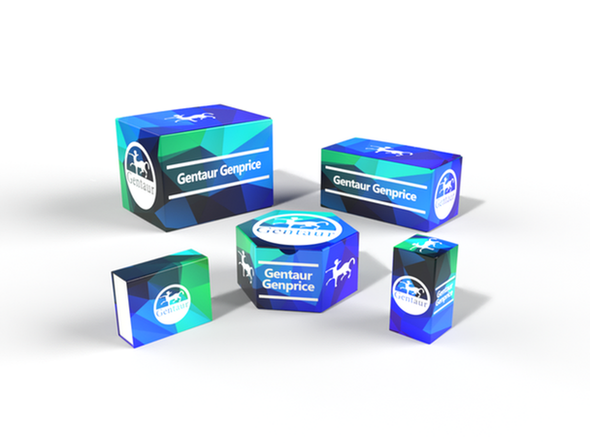740
Human Syndecan-1 (SDC3) ELISA Kit | AE20409HU
- SKU:
- 740-AE20409HU
- Availability:
- Usually ships in 5 working days
Description
Human Syndecan-1 (SDC3) ELISA Kit | AE20409HU | Gentaur UK, US & Europe Distribution
Species Reactivity: Human (Homo sapiens)
Abbreviation: SDC3
Alternative Name: SDCN; SYND3; N-syndecan|syndecan neural type|syndecan proteoglycan 3
Application: ELISA
Range: 0.625-40 ng/mL
Sensitivity: 0.226 ng/mL
Intra-Assay: ≤7.2%
Inter-Assay: ≤11.6%
Recovery: 1, 05
Sample Type: Serum, Plasma, Other biological fluids
Detection Method: Sandwich
Analysis Method : Quantitive
Test Principale: This assay employs a two-site sandwich ELISA to quantitate SDC3 in samples. An antibody specific for SDC3 has been pre-coated onto a microplate. Standards and samples are pipetted into the wells and anySDC3 present is bound by the immobilized antibody. After removing any unbound substances, a biotin-conjugated antibody specific for SDC3 is added to the wells. After washing, Streptavidin conjugated Horseradish Peroxidase (HRP) is added to the wells. Following a wash to remove any unbound avidin-enzyme reagent, a substrate solution is added to the wells and color develops in proportion to the amount of SDC3 bound in the initial step. The color development is stopped and the intensity of the color is measured.
Product Overview: By screening a human fetal brain cDNA library with a fragment of the ectodomain of human SDC3, followed by ligation of overlapping clones, Berndt et al. (2001) obtained a full-length SDC3 cDNA. The deduced 443-amino acid protein contains a large extracellular domain, followed by a glycine-rich transmembrane domain and a short cytoplasmic tail that contains the constant and variable regions characteristic of syndecans. The extracellular domain has 8 glycosaminoglycan attachment sites arranged in 2 clusters, and the intracellular domain has a PDZ domain-interacting motif and 4 conserved tyrosine residues. RNA dot blot analysis detected highest SDC3 expression in adult and fetal brain, adrenal gland, and spleen. Strong expression was detected in almost all specific brain regions examined except pituitary gland.
Stability: The stability of ELISA kit is determined by the loss rate of activity. The loss rate of this kit is less than 5% within the expiration date under appropriate storage condition. The loss rate was determined by accelerated thermal degradation test. Keep the kit at 37°C for 4 and 7 days, and compare O.D.values of the kit kept at 37°C with that of at recommended temperature. (referring from China Biological Products Standard, which was calculated by the Arrhenius equation. For ELISA kit, 4 days storage at 37°C can be considered as 6 months at 2 - 8°C, which means 7 days at 37°C equaling 12 months at 2 - 8°C) .






